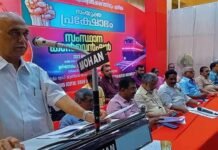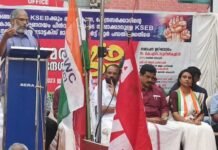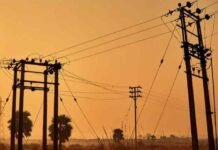(Theme and content of the proposed study by Industries Research & Services Sponsored by the officers and workers organisations in Power Sector in India)
- During the four and a
half decade since independence Power generating capacity in the country has increased by more than thirty times. Electricity generation has increased more than fifty times. About 15 million farmers use subsidised electricity today and about 50 million Indian households arc electrified. The number of consumers connected to the Indian power grid is 75 million which is Fifty times the pre-independence figure.
The India’s power system today with its extensive regional grids maturing in to an integrated national grid, and its millions of kilometers of T & D lines criss crosing the country, are truly symbolic of the successes and failures of the developmental path pursued since independence.
2. Facts and figures about the physical growth of India’s power system may sound hollow and deceptive in the background of common perceptions about the proverbial inefficiencies of the state electricity boards, the financial losses incurred by them and the perpetual power crisis that is being endlessly debated all over the country. Per capita consumption of electricity in India is only 280 KWH per year even today, a small fraction of that in USA or other developed countries. But it has increased nearly fourteen fold since independence, where as the per capita national product has only doubled. Thus the national economy dominated by the private sector which accounts for the lion share of the work force, was growing at a much lower pace when compared to the power sector that is managed by the public sector. The cost of producing, distributing and selling electricity in the country, even after accounting for all the direct and indirect subsidies is three to four times lower compared to those prevailing in the developed countries. While judging the success and failures of the power development policies pursued since independence and suggesting solutions for power crisis, these basic facts are often underplayed or even altogether overlooked.
3. The Electricity (supply) Act of 1948 has provided a broad frame work for power development in post independent India. The Central Electricity Authority and the State Electricity Boards come into existence as per this act as the custodians of power utility services in the country. During the early years of Indian independence, the Central Water and Power Commission together with the Planning Commission had developed the national perspectives and programmes for the rapid electrification of the country.
4. Development of indigenous capabilities in the design as well as manufacturing and construction technologies of power related systems and equipment were very much an integral part of these perspectives, so that the national electrification programme could be not only cost effective but also self sustaining. The country could not afford continued import of capital goods and technologies needed for power development at exorbitant costs to the ex-colonial powers. This as well as the need for diversification and expansion of the national economy into the capital goods sector prompted the public sector initiatives for the manufacture of power plant equipment. India with its large population base as well as low per capita consumption of electrical energy was correctly perceived by the Indian planners as a big potential market for power related equipment for several decades to come. BHEL as well as several other successful enterprises in the public as well as private sector arc examples for the rapid building up of technological capabilities in these sectors under such policy perception. India’s capabilities today in thermal and hydel power equipment as well as power system engineering arc somewhat unparalleled among the developing countries. With regard to nuclear power with its total system capabilities including fuel processing, India has taken a ring side scat along with half a dozen developed countries. All these national capabilities have helped the country in a big way
in keeping down the investment costs in the power sector to a large extent in spite of the poor linkages within the national economy due to inadequate planning and the consequent dependence on imported inputs and pressures generated by “foreign aid agencies”. The national enterprises in the power sector with their extensive experience, expertise, and skilled man power arc today a major asset of the national economy. Their competence and competitiveness have been proved even in the international market.
5. The NTPC that came into existence during the mid seventies has made commendable contributions in expanding thermal power capacities in the country partly due to the channelising of foreign credits for which there was no dearth during the eighties. Its counterparts the NHPC and the NPC have also now matured into national level organisations with immense capabilities and expertise in their respective areas. The state level Electricity Boards with a total employee strength of around seven lakhs have played a vital role in power development. But they are put into an irrational financial squeeze-thanks to the unaccounted subsidies, they are forced to extend as part of public policy. Loss of financial autonomy is not only causing their degeneration but also distorting the missions and objectives for which they were set up. The Regional Electricity Boards as well as the CEA that were created for regional and national level planning and coordination are rendered helpless thanks to the loss of a national vision and the dilution of planning process itself at the national level. But all these organisations together with their expertise and experienced man power represent an invaluable asset for the power development programme of the country.
6. The question of providing fuel for power generation that was nearly doubling every seven or eight years also to be necessarily tackled at the national level; The Coal India, the ONGC, the GAIL, the public sector Refineries, the Uranium Corporation of India Ltd etc. were the public sector organisations set up for this purpose. The Indian Railways and the Shipping Corporation of India play an important role in the cost effective transportation of fuel for power generation. The direct and indirect investments as well as “the developmental initiatives for the power sector was thus primarily channelised through the public sector. Such a strategy was necessary if (he huge investments were to be cost- effective at the national level so that electric power is made available at a price affordable in a backward economy for its sustained growth and development.
7. Electric power was thus always perceived by the Indian Government as a cheap infrastructural service to be provided by the public sector, and the Indian Electricity Act, 1948 had envisaged that public utilities should make it available on a no- loss no-profit basis. The direct investments made in the country for power development every year are of the same order as the annual revenue earnings of power utilities from the sale of electricity. Revenue surpluses of the utilities hardly cover the depreciation costs of power systems and there is very little of plough-back for additional investments. Thus a sizeable proportion of the national savings has to be diverted as investments in the power sector. In addition to loans and subventions from Government, domestic savings arc mobilised through loans and bonds either directly or through financing agencies like the Rural Electrification Corporation and the Power Finance Corporation, by the electricity boards for investments. Resource constraints in the financing of national power development programmes arc cleverly utilised by the developed countries for forcing ‘aid packages’ through bilateral and multilateral loans. The disruptive role of such ‘aid packages’ and the consequent escalation of investment and operating costs in the power sector arc not yet properly evaluated and understood.
8. Successes or failures of the policies and programmes for power development initiated since independence need to be objectively evaluated from a national perspective in quantitative as well as qualitative terms. This can be done only through international comparisons using appropriate economic criteria. But without any such rigorous analysis the Govt. of India has now prepared itself for fundamentally altering the course of development in the power sector in an arbitrary manner. The resources and foreign exchange crisis are used as an excuse for ushering in fundamental changes in the development strategy. The World Bank and other international agencies had always held that energy, especially electricity in our country, is priced much below the international levels. This, in their opinion was inhibiting the entry of private capital both Indian and foreign to the power sector. The Govt. Of India has now amended the Electricity (Supply) Act, 1948 and has created the necessary, ‘legal and financial environment’ for enabling Indian and foreign private capital to set up power system and to produce and sell electricity more or less on a cost-plus basis through the state level electricity boards or otherwise: Consequences of such a policy will undoubtedly be far reaching.
9. Common people and farmers of India are thus faced with the immediate prospects of a sharp hike in their electricity bills. Industrialists in many sectors of the national economy arc already concerned about loosing their competitiveness in international market. Economists are skeptical about the capability of the Indian economy to sustain such high cost power development programmes. There is a widespread fear that the working of the national level institutions and enterprises that were created since independence in order to promote cost-effective development of the power sector will get disrupted and the wealth of expertise and experience gained through four and a half decades of national development will get ultimately destroyed as a result of these new policy prescriptions.
10. The proposed study “India’s Power Sector: Problems and Prospects” – will collect and consolidate the facts and Figures related to India’s development experience in the power sector and present them for facilitating a meaningful discussion on the policy options available to the country. In brief it will:
(i) Objectively evaluate the success and failures of the national policies as well as the institutions and enterprises that came into existence since national independence.
(ii) Examine critically the implications of the recent policy initiatives by the Govt. of India and
(iii) Explore alternative policy perspectives taking into account the problems of the national economy as well as the strength and weakness of India’s power sector.



















